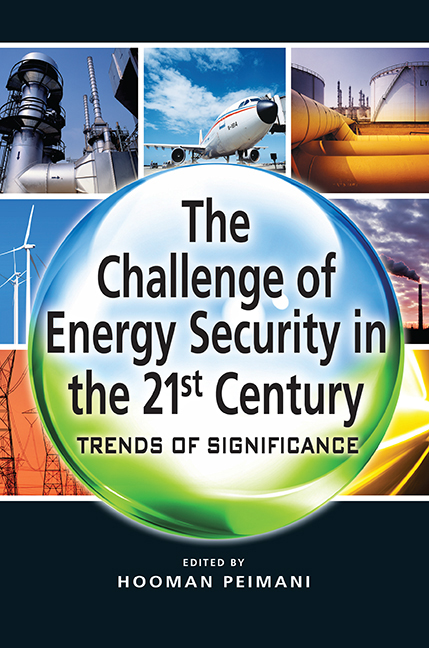Book contents
- Frontmatter
- Dedication
- Contents
- List of Tables and Figures
- List of Maps
- List of Acronyms
- Acknowledgements
- About the Contributors
- INTRODUCTION
- Global Trends in Renewable Electricity, Renewable Fuels, and Markets for Renewable Heating and Cooling
- Resource Mutualism or Codependence? The Water-Energy Nexus in Asia
- OPEC's Long-Term Role in Affecting Energy Security
- Whither a Gas OPEC? Not in the Pipeline
- Shared Interests or Competing Actions: What Drives Energy Security Cooperation between Asia and Europe?
- CONCLUSION
- Index
Global Trends in Renewable Electricity, Renewable Fuels, and Markets for Renewable Heating and Cooling
Published online by Cambridge University Press: 21 October 2015
- Frontmatter
- Dedication
- Contents
- List of Tables and Figures
- List of Maps
- List of Acronyms
- Acknowledgements
- About the Contributors
- INTRODUCTION
- Global Trends in Renewable Electricity, Renewable Fuels, and Markets for Renewable Heating and Cooling
- Resource Mutualism or Codependence? The Water-Energy Nexus in Asia
- OPEC's Long-Term Role in Affecting Energy Security
- Whither a Gas OPEC? Not in the Pipeline
- Shared Interests or Competing Actions: What Drives Energy Security Cooperation between Asia and Europe?
- CONCLUSION
- Index
Summary
1. INTRODUCTION
Renewable resources of energy have immense potential to supply a much larger fraction of the world's electricity, fuel for transportation, and heat and other energy services. Renewable energy can be utilized through a variety of sources, approaches, systems, and technologies:
• Plants and algae require sunlight for photosynthesis before they can be converted to biofuels or biopower;
• Hydropower capitalizes on rain and snowfall resulting from water evaporation and transpiration;
• Wind generates electricity directly by turning a turbine, or indirectly in the form of ocean waves, but the wind itself is driven by the sun;
• Tidal and geothermal energy are the only renewable energy resources that are not a direct result of solar energy. Tides rise and fall due to gravitational attraction between the oceans and the moon. The heat trapped in the earth itself is due to both leftover heat from the formation of the planet, and the radioactive decay of elements within the crust, such as uranium and thorium.
When the potential for these energy sources is quantified, the numbers are startling. One recent assessment, which collected actual data on wind speeds (at a hub height of 80 metres) at 7,753 surface stations, identified about 72 terawatts (TW) of potential. One fifth of this potential could satisfy 100 per cent of the world's energy demand and more than seven times its electricity needs. If we exclude biomass and look at solar, wind, geothermal, and hydroelectric energy resources, the world has roughly 3,439,685 terawatt-hours (TWh) of potential — about 201 times the amount of electricity the world consumed in 2007 (see Table 2.1).
So far, less than 0.09 per cent of the potential for renewable energy to meet global energy needs has been harnessed. However, that percentage is starting to increase.
- Type
- Chapter
- Information
- The Challenge of Energy Security in the 21st CenturyTrends of Significance, pp. 8 - 38Publisher: ISEAS–Yusof Ishak InstitutePrint publication year: 2011



